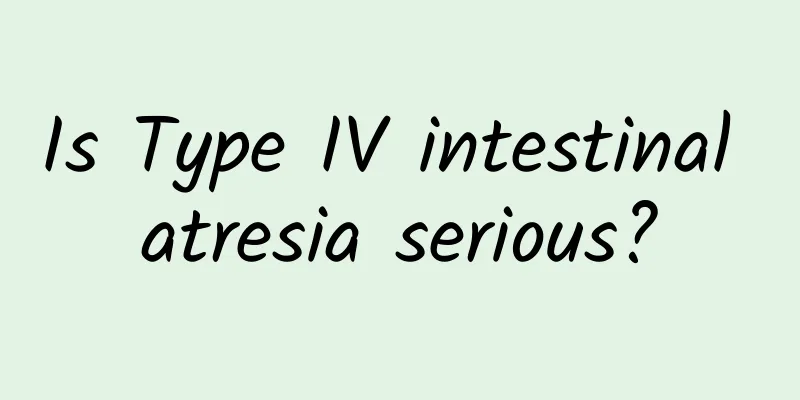Is Type IV intestinal atresia serious?

|
Type IV intestinal atresia is a severe congenital intestinal malformation that requires prompt surgical treatment to avoid life-threatening conditions. This disease is usually discovered in the neonatal period and manifests as vomiting, abdominal distension, and difficulty defecating, and requires imaging examinations to confirm the diagnosis. 1. Genetic factors Type IV intestinal atresia may be related to heredity, and certain gene mutations or family history may increase the risk of the disease. Although the specific mechanism is still unclear, genetic counseling during pregnancy and prenatal screening can help early detection. 2. Environmental factors Exposure to certain harmful substances or infections during pregnancy may increase the risk of type IV intestinal atresia in the fetus. Pregnant women should avoid exposure to chemical toxins, radiation, and certain viruses and maintain a healthy lifestyle. 3. Physiological factors Type IV intestinal atresia may occur when the intestines of the fetus develop abnormally during development. This abnormality may be related to insufficient blood supply to the intestines or other problems during embryonic development. 4. Pathological factors Type IV intestinal atresia is a serious intestinal malformation that may be accompanied by other congenital anomalies, such as heart defects or urinary system problems. Early diagnosis and comprehensive treatment are key. Treatment includes surgical repair and postoperative care. 1. Surgical treatment Surgery is the only effective method for treating type IV intestinal atresia, which usually includes intestinal resection and anastomosis, ostomy or intestinal reconstruction. The specific surgical method is determined according to the child's condition. 2. Postoperative care After surgery, the child's vital signs need to be closely monitored to prevent infection and complications. Nutritional support is very important and may require intravenous nutrition or special formula feeding. 3. Rehabilitation management Long-term follow-up helps evaluate the child's growth and intestinal function. Physical therapy or nutritional adjustments can be performed when necessary to ensure the child's healthy growth. Type IV intestinal atresia is a serious disease that requires timely intervention. Parents should pay close attention to the symptoms of newborns and seek medical treatment in time. Through scientific treatment and care, most children can return to normal life. |
<<: Is cervical hypertrophy a sign of intrauterine adhesion?
>>: What are the symptoms of cervical hypertrophy in women?
Recommend
Hyperplastic vulvar leukoplakia, typical symptoms at each stage.
Did you know that leukoplakia vulvae is mostly ca...
4 ways to prevent bacterial vaginosis
Bacterial vaginitis is mainly caused by Gardnerel...
Excessive cleaning can also lead to the cause of cervical erosion
Cervical erosion is a common female disease, and ...
The best weight loss supplement! Japanese unpeeled apple
Obesity is a symptom that can cause people a lot ...
What does it mean when a large piece of flesh is lost during a miscarriage? What should I do?
If there is vaginal bleeding in the uterine cavit...
Typical symptoms of hyperplastic vulvar leukoplakia at different stages - do you know?
Experts analyze the symptoms of white spots on th...
Does ovarian cyst cause abdominal pain? What are the clinical symptoms?
Will ovarian cysts cause abdominal pain? What are...
Women should seriously understand how to care for vulvar leukoplakia in daily life
Various female gynecological diseases are endange...
Early symptoms of ectopic pregnancy
Early symptoms of ectopic pregnancy: Ectopic preg...
What are the symptoms of multiple uterine fibroids? What are multiple uterine fibroids like?
The symptoms of multiple uterine fibroids in the ...
What are the dangers of multiple abortions?
With the development of society, the status of wo...
What to do if you get angry during menstruation?
During the menstrual period, women's immunity...
Briefly describe the types of vulvar leukoplakia
According to medical research, vulvar leukoplakia...
What are the types of pelvic inflammatory disease?
Do you know what types of pelvic inflammatory dis...
Diagnostic steps of causal amenorrhea in traditional Chinese medicine
The diagnosis of causal amenorrhea should be base...









